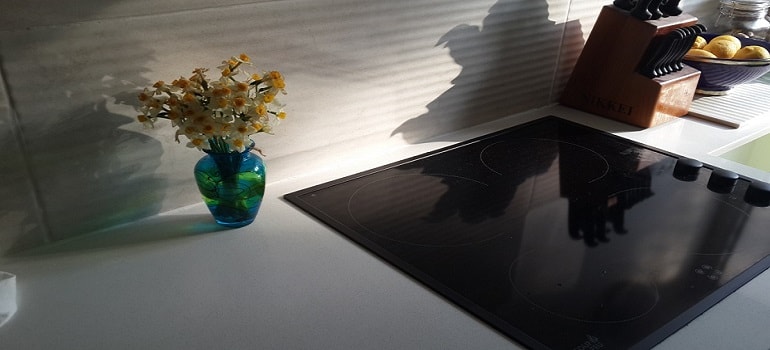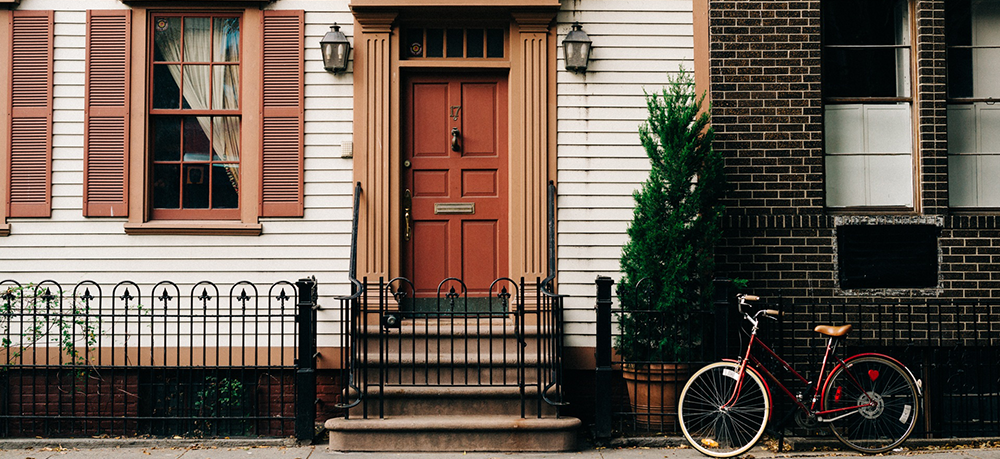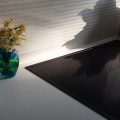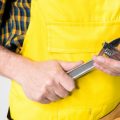
The time has come to replace your electric cooker, whether it’s because your appliance is dead after years of use or simply because you want to modernise your kitchen. And that’s great, but…
You are probably reading this article because you need advice right from the experts or spent a grip of money for what seems like a simple wiring job.
And while a professional electric cooker installation itself is not an easy task to carry out yourself, there are legalities you should be aware of first before you roll up your sleeves and plunge into the DIY territory.
Table of Contents
Electrical Regulations and What They Mean for You
Let us start by saying that if your new cooker model is more powerful than what you previously owned, chances are that you will need to install a new circuit in order to power the appliance. However, cooker circuit installation can only be done by a Part P certified electrician!
With that said, if you are able to use your current circuit and cooker control unit, then you are free to wire your new purchase, but you need to know what you are doing as this procedure can be fatal if you are not careful.
Even if you do know what you are doing, you will still need to hire a qualified electrician to inspect your work and issue you a Minor Electrical Installation Works Certificate. Failure to do so can void your property insurance and you will have a harder time selling your home.
Need a Handyman?
Enter your postcode to view our rates and availability in your area.
For questions about the services we offer visit our main site or you can always call us at 020 3404 4045
If, after reading this, you still wish to perform a DIY installation, proceed to the 6 steps below.
Step #1: Check If Your Home Meets the Power Requirements.
Electric cookers require lots of power to operate since they generate intense amounts of heat. This means that you need to get at least a 13 amp fuse, although newer models will most likely require a 32 amp fuse (read your product’s specifications to check its exact amp rating).
Since you need a separate fuse for your appliance, you will also need to fit your cooker on a separate circuit. This isolated system will ensure that your cooking appliance is drawing sufficient amounts of power at all times and that it is perfectly safe to work with.
Step #2: Purchase and Install a Double Pole Isolating Switch.
As mentioned earlier, cookers are power-hungry machines. And because of that, they need to be “supervised” by a double pole isolating switches. But what do these gadgets do, exactly?
Essentially, this type of isolating switch ensures that, in the event of a short circuit, the cooker’s wiring (neutral wire included) is no longer carrying electrical current. This also means that you won’t get shocked if you happened to touch your appliance after the event.
Notice that we said a double pole isolating switch and not just a “switch” or a “single switch”, which is also available on the market. There is a reason for that. Single switches can only de-energize the live wire, but cookers draw so much power that they can energise even the neutral wire. Double pole switches, on the other hand, shut both wires off for complete safety.
Step #3: Mind the Positioning of Your Cooker Control Unit.
Your appliance needs to be connected via a thick cable to the so-called cooker control unit. However, make sure that your cooker is positioned within two metres of the unit, but never directly below it to prevent a potential fire hazard situation.
If your cooker control unit is a more recent model, it will likely have neon lights installed on it. These will signify when the unit is turned on and whether any current is flowing through it.
Step #4: Pick the Right Cable for Your Cooking Needs.
If you just bought a new electric cooker, you should have a cable included in the packaging. However, if that is not the case, here are some general guidelines to help you pick the right one:
- You need a cable with sufficient thickness. For most domestic scenarios, a 2.5mm heat-resistant cable will usually do the job just fine.
- The cable needs to have several wires. Some of the more commonly sold varieties come with three wires – blue wire for neutral current, brown wire for live current, and an exposed wire that takes the residual current to the earth below. The cable is usually named as a “2 core and earth” or a “twin and earth”.
If you are still not certain what is the right type and size of cable for your appliance, always make sure to read the official manual and to consult a professional technician!
Step #5: Take the “Hot Zone” of Your Appliance Into Account.
The cooker’s hot zone is essentially the area that is located directly above your appliance. So, before installing the cooker at your desired location, free it from any materials that are even remotely flammable, such as wood, wallpaper, overhanging boiler, etc.
There should also be a gap of at least 300mm between your appliance and any other items installed in your kitchen. This is crucial when you’ve just done a thorough property renovation, including fresh kitchen fitting, mounting sinks, a fridge-freezer installation, or installation of any other appliances such as washing machine or dishwasher fitting. The only exception is countertops – everything else should remain at a respectable distance from your cooker.
Step #6: Connect Your Cooker to Your Home’s Power Grid.
Now that you know all requirements by heart and have taken all necessary safety precautions, it’s time to wire your appliance. Here is what you need to do to ensure a successful installation.
Connect the cable to the back of your cooker
- Locate the terminal outlet box on the back of your appliance and unscrew the plate.
- Connect the live (brown), neutral (blue), and earth (green-yellow) wires into their appropriate slots (neutral goes to the left, live – to the right, earth – to the centre).
- Tighten the screws to secure the wires in place and re-apply the back plate.
Connect the cooker to your cooker control unit.
- Check if the cooker cable is securely attached to your appliance.
- Lock the cooker circuit on your fuse box with a small padlock to prevent anyone from accidentally flipping the switch while you are wiring your appliance.
- Turn the double pole isolator switch on to completely de-energise your cooker.
- Place a scrap piece of vinyl or other protective covering underneath your appliance before moving it into position to avoid scratching your kitchen flooring.
- Use a voltage tester to ensure that your cooker control unit is completely dead and safe to work with, then remove the screws inside the connections.
- Gently push the wires into their corresponding slots, then place the screws back. When doing so, be careful not to cross-thread the screws, i.e. screw them at an angle.
- Finally, screw the insulation bit under the wiring to firmly secure the wires in place.
In conclusion:
If you followed all our instructions closely, you are probably already cooking your favourite meals as we speak. As you can see, even minor electrical jobs require lots of patience, research, and preparation, but it is doable if you work with extreme care and with the right mindset.
If, however, you had as much as a tiny grain of doubt about any part of the cooker installation process, we urge you to hire a certified professional to do the job for you. Yes, you will pay a bit more to have your cooker wired, but we can all agree that safety doesn’t have a price, right?




heating element is an essential, simple part that is easy to replace in most electric ovens and ranges These are the parts responsible for creating the heat necessary for baking and broiling, separate branch-circuit from the main panel to each appliance.
Great article! This is a great how to for the everyday DIY-er. I feel that most people are going to be turned away with having to deal with the power considerations, but the reward after hard work is a great pay off.
Can a New Hob that also requires hard wiring at the same time as the NEW OVEN both be connected through the same hard wire switch?Frank Bull
Hello Frank,
It depends on your make and model of the hob and oven, long story short, it’s complicated but possible. However, I’d suggest you consult with a professional electrician.
Regards! Kevin
That’s great can I boil my rice now? Do you think?
Hi can i use old 6mm Cable already on old cooker , or replace new 6mm .
what cable should i need for
Hotpoint
Ultima HUI612P 60cm Double Oven Electric Cooker with Induction Hob
would i ned 6mm or 10 mm thankyou
Hello Ell,
A quick research shows that you should be able to use a 6mm cable. However, we suggest you to consult with a professional electrician, especially if it’s your first experience with wiring appliances. Here you can find more info about your appliance .
If, as I did, you cross-thread one of the screws, how can I obtain another one? All internet searches turn up nothing
Hello, Andrew
If you’re finding difficulties with your electric cooker, we suggest you turn to a professional. Internet searches are not the best place to find advice for your specific situation.
The Fantastic Handyman Team
I’m confused about how the neutral conductor can carry current if the line conductor is disconnected at a single-pole switch. This contradicts a basic principle of electrical theory which is taught at GCSE-level. As far as I’m aware, the double-pole requirement is for TT supplies where the reliable connection of neutral to earth potential cannot be guaranteed. Most of us in the UK are on TN supplies, and so double pole switching is only required at the main switch of the consumer unit.
Hello, Chastity
If you’re having trouble with your electric cooker, we’d be happy to help. You can reach us on this number: 020 3404 4045
The Fantastic Handyman Team
Hi my dad is gou v to work up my electric cooker but paused, as the council have put a metal plate on plug on the wall saying blue is live?? It is puzzling as he said it’s not and isn’t sure what to do?
Hi Chastity,
I didn’t study in the UK, so not familiar with all of the terms, but regarding your question about double pole vs single pole switch: Simply put, and from a purely physics perspective… the combined load of all the items in the home will inadvertently raise the voltage of the neutral throughout the home to something above zero. This is due to the finite resistance in the various neutral cables between the load and the earthing point (even TT), If I want to work on any part, I would want to be isolated from this, i.e. to be fully isolated – live and neutral.
Thanks for these valuable tips that will help me.
I have an electric cooker and seems some of the screw are missing from the electric supply to install the cables where can I buy these
What if the engineer decides to use the red colour wire on live line and black on neutral line instead of brown and blue,,, does colour matters?
New cooker the wire dosent tighten in slots in the back of oven terminal stumped as what to do
My cooker came with a sealed plug can I wire it up straight to the wall connection
I am going to connect my oven to a 3 pin plug and what’s the best way. It’s to be used as a powdercoating oven.
How to connect the 5 position oven selector switch( kc 600ss) to the element
Also can the switch keep tripping the breaker if its faulty
Can the oven switch trips the breaker everytime you turn it on
This is an informative post and it is very useful and knowledgeable. And the whole thing described by you is very interesting and helpful to us.
Really enjoyed this article, can you make it so I receive an email whenever you publish a fresh update?
I have a candy cooker and hob if you put a normal 13amp plug on each and plug they both in on extension will it work
If my old 2kW oven with 13A plug is replaced with a 3.6kW/15A rated oven coming with 1.5mm2 supply cable for direct wiring, do the wiring regs not require a 16A or 20A breaker installed in addition to the cooker circuit’s 32A MCB at the consumer unit in order to protect the 1.5mm2? This would be highly inconvenient due to space.
Hi which wires go to the back of a electric cooker with six terminals on the back of my electric cooker top middle or bottom can u please let me know please there are different ways I’ve been online my name is Mr brunton thank you
I have had a new oven (Bosch plug hardwired into new connection point on a new dedicated circuit back to the consumer unit) I have also had additional sockets/switches added for cabinet lights and extractor to the ‘existing kitchen circuit. I have been given a cert for the work – Minor Works Electrical Certificate. I assume this is ok for the sockets/switches but not the new oven circuit? It’s now done but want to be sure it’s been signed off properly.
Does the electrical switch for the electric cooker need to be readily accessible or can it be under the counter?
I reside in rental property and the outlet plug is under the sink
I like this website. Very nice article. Lately, I Had the same problem.
On my new hob, L1 and L2 are linked by a bridge already fitted. It doesn’t look man enough. The old hob used a bridge the same size wire as the wire coming in, is the pre fitted link OK?
Could you tell me does a hob and an oven need two separate sockets?
Just had new oven delivered but the plug that goes through back of units is the one that does not unscrew making it difficult to slide through back, any suggestions. Only a small hole for the plug to go through.
My wires in the wall for cooker starts with blue then yellow/green then brown is it OK that way around
THANKS
very useful and straight forward